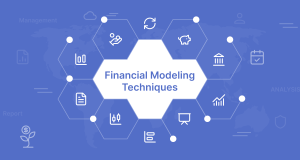Introduction Financial modeling is a powerful tool that can transform the way small businesses operate, plan, and make decisions. By creating accurate and insightful financial models, business owners can forecast future performance, identify potential risks and opportunities, and make data-driven decisions that drive growth and profitability.
This comprehensive guide will explore various aspects of financial modeling, from templates and tools to best practices and industry trends, providing small business owners with the knowledge and resources they need to excel in financial planning and analysis.
1. Free Industry-Specific Financial Model Templates for Small Businesses
Small businesses often face challenges in creating financial models from scratch. Free templates tailored to specific industries provide a solid starting point for financial planning. These templates simplify the process by offering pre-built frameworks that include:
- Profit and Loss Statements: Helps in tracking revenue and expenses over time.
- Balance Sheets: Provides a snapshot of assets, liabilities, and equity.
- Cash Flow Statements: Tracks cash inflows and outflows.
- Break-Even Analysis: Calculates the point at which revenue equals expenses.
Where to Find Free Templates:
- Causal: Offers templates for industries like SaaS, retail, and e-commerce.
- Template.net: Provides customizable Excel templates.
- Microsoft Office Templates: Includes basic financial model templates for small businesses.
Pro Tip: Choose a template designed for your industry to ensure the underlying assumptions and formulas are accurate and relevant.
2. Financial Modeling Templates
Financial modeling templates streamline the process of forecasting, budgeting, and analyzing business finances. Here are some common templates and their use cases:
- Startup Financial Model Template: Ideal for early-stage businesses, helping predict funding requirements and potential revenue streams.
- Real Estate Financial Model Template: Focuses on property investments, calculating metrics like ROI, cap rate, and cash flow.
- SaaS Financial Model Template: Tracks metrics specific to subscription-based businesses, such as Monthly Recurring Revenue (MRR) and Customer Acquisition Cost (CAC).
- E-Commerce Financial Model Template: Includes assumptions for inventory management, customer acquisition, and sales forecasts.
Key Benefits of Templates:
- Save time by eliminating the need to build models from scratch.
- Reduce errors with pre-built, tested formulas.
- Enable customization to fit unique business needs.
3. Excel for Financial Modeling
Excel remains the go-to tool for financial modeling due to its flexibility, ease of use, and powerful analytical capabilities. Here’s how small businesses can leverage Excel effectively:
Key Features for Financial Modeling:
- Pivot Tables: Summarize and analyze large datasets easily.
- What-If Analysis: Test different scenarios to see how changes in variables impact financial outcomes.
- Data Validation: Ensure inputs are accurate and within specified ranges.
- Macros: Automate repetitive tasks, improving efficiency.
Common Excel Financial Models:
- Three-Statement Model: Integrates the income statement, balance sheet, and cash flow statement.
- DCF Model: Calculates the present value of future cash flows to estimate the business’s value.
- Budget vs. Actuals Model: Compares planned financial performance to actual results.
Pro Tip: Use consistent formatting, such as color codes for inputs, calculations, and outputs, to make models easier to read and audit.
4. Financial Modeling Courses & Training
Learning financial modeling is crucial for small business owners and finance professionals. Here are some top courses and training resources:
- Financial Modeling and Valuation Analyst (FMVA) by CFI: A globally recognized certification covering financial statement analysis, valuation, and advanced Excel skills.
- Wall Street Prep: Offers hands-on training for advanced financial modeling and valuation techniques.
- Udemy: Affordable, beginner-friendly courses on financial modeling basics.
- LinkedIn Learning: Provides short, practical tutorials on Excel and financial modeling.
What to Look for in a Course:
- Real-world examples and case studies.
- Access to templates and tools.
- Interactive exercises for hands-on learning.
- Certification to enhance credibility.
Recommendation: Start with free or low-cost courses to build foundational knowledge, then invest in advanced certifications.
5. Financial Modeling Best Practices
To create accurate and reliable financial models, follow these best practices:
- Plan Before Building:
- Define the purpose of the model (e.g., fundraising, budgeting, valuation).
- Identify key inputs and assumptions.
- Maintain Consistency:
- Use uniform formats, fonts, and colors.
- Clearly separate inputs, calculations, and outputs.
- Stress Test Models:
- Simulate different scenarios (best case, worst case, base case) to understand potential risks and opportunities.
- Avoid Hardcoding Numbers:
- Use separate cells for assumptions and link formulas to these cells.
- This approach makes the model easier to update.
- Review and Audit:
- Check formulas for errors and verify assumptions.
- Use Excel’s “Trace Precedents” and “Trace Dependents” tools to ensure accuracy.
- Document Assumptions:
- Include a summary sheet listing all key assumptions for transparency.
6. Financial Modeling Basics
For beginners, understanding the foundational elements of financial modeling is essential. Here’s what you need to know:
Core Components:
- Revenue Projections: Estimate future sales based on historical data, market research, and growth assumptions.
- Cost Assumptions: Differentiate between fixed costs (e.g., rent) and variable costs (e.g., raw materials).
- Profit and Loss Statement: Summarize revenue, expenses, and net income.
- Cash Flow Statement: Track cash inflows and outflows to ensure liquidity.
- Balance Sheet: Show the financial position, including assets, liabilities, and equity.
Key Metrics to Monitor:
- Gross Margin: Indicates profitability after direct costs.
- EBITDA: Measures operational efficiency.
- Return on Investment (ROI): Assesses the profitability of investments.
- Working Capital: Tracks short-term liquidity.
Pro Tip: Use industry benchmarks to validate assumptions and ensure realistic projections.
7. Financial Modeling Careers
Financial modeling skills open doors to a wide range of career opportunities in various industries, including consulting, investment banking, and entrepreneurship. Common roles include:
- Financial Analyst: Builds models to support decision-making.
- Valuation Specialist: Focuses on determining the value of businesses and assets.
- CFO or Finance Manager: Oversees financial planning and strategy.
- Investment Analyst: Evaluates investment opportunities.
Required Skills:
- Advanced Excel proficiency.
- Strong understanding of financial statements.
- Knowledge of industry-specific metrics.
- Attention to detail and analytical thinking.
Career Path: Start with entry-level analyst roles and pursue certifications like FMVA or CFA to advance in the field.
8. Financial Modeling Software
While Excel is versatile, financial modeling software offers advanced features that improve efficiency and accuracy. Here are some popular tools:
- QuickBooks Advanced: Ideal for small businesses, offering budgeting and forecasting capabilities.
- Anaplan: A cloud-based platform for complex financial modeling and planning.
- Planful: Streamlines budgeting, forecasting, and reporting processes.
- Adaptive Insights: Simplifies financial planning and analysis with user-friendly dashboards.
- Solver: Integrates with ERP systems to enhance reporting and analysis.
Advantages of Software Over Excel:
- Automation of repetitive tasks.
- Real-time collaboration and updates.
- Enhanced data visualization with dashboards.
- Scalability for growing businesses.
Pro Tip: Choose software that integrates seamlessly with your existing systems and meets your business’s complexity level.
9. Financial Modeling Industry Trends
The financial modeling landscape is evolving, driven by technological advancements and changing business needs. Here are some emerging trends:
- AI-Powered Forecasting:
- Machine learning algorithms analyze historical data to provide accurate forecasts.
- AI tools like ChatGPT assist in scenario planning and model optimization.
- Cloud-Based Solutions:
- Platforms like Anaplan and Adaptive Insights enable remote collaboration.
- Cloud integration ensures real-time updates and data security.
- Sustainability Metrics:
- Businesses are incorporating ESG (Environmental, Social, and Governance) factors into their financial models.
- Metrics like carbon footprint and social impact are becoming standard.
- Integrated Business Planning (IBP):
- Financial models are being linked with operational and strategic plans to provide a holistic view of business performance.
- Data Visualization Tools:
- Tools like Power BI and Tableau enhance decision-making by presenting data in interactive dashboards.
Future Outlook: As technology continues to advance, financial modeling will become more automated, allowing businesses to focus on strategic insights rather than manual calculations.
Conclusion
Financial modeling is a powerful tool for small businesses to navigate challenges, plan growth, and secure funding. By leveraging templates, mastering Excel, and staying updated with industry trends, businesses can create accurate and actionable financial models. Whether you’re a beginner or a seasoned professional, investing in financial modeling skills will yield significant returns for your business’s success.



